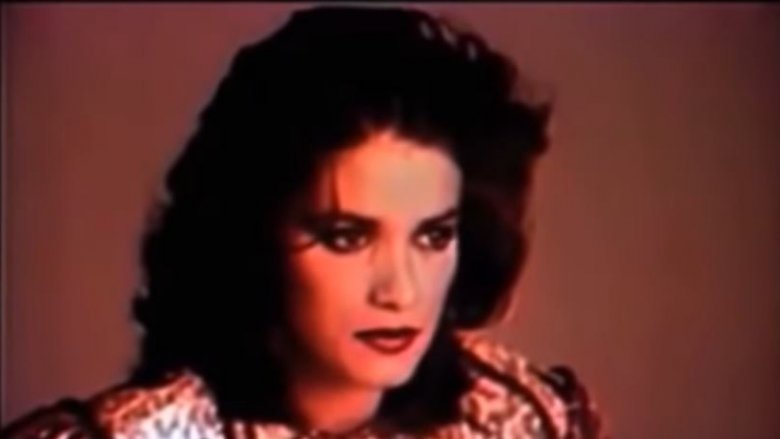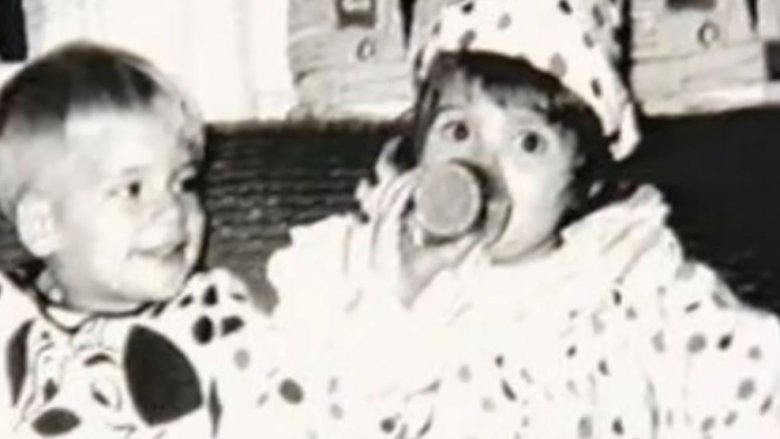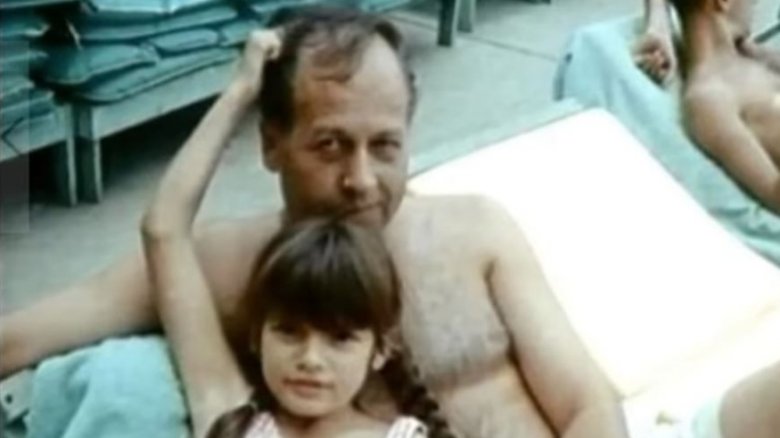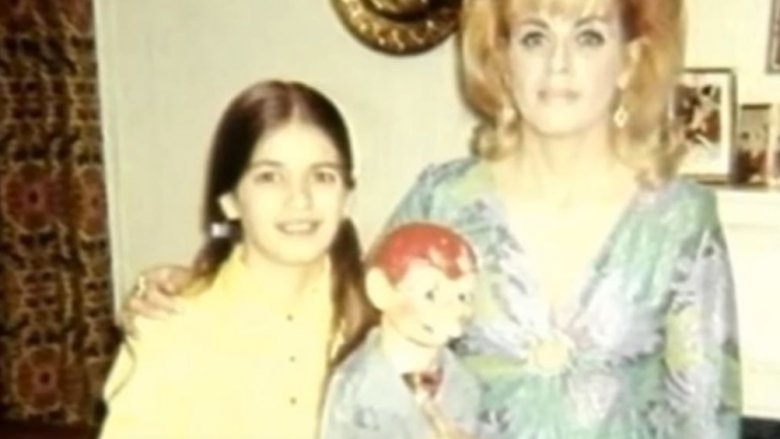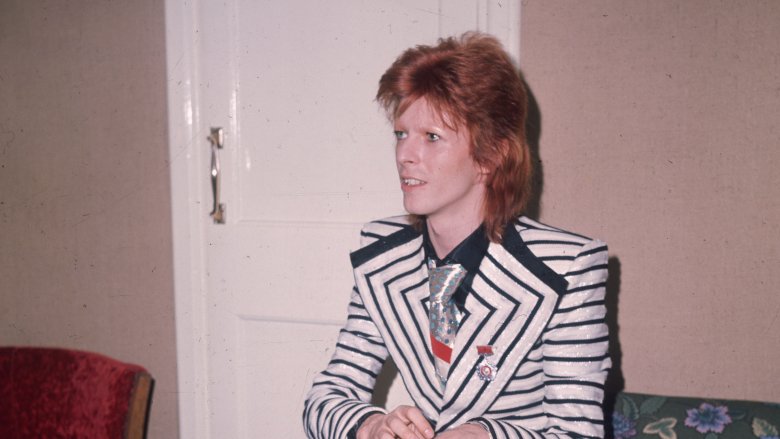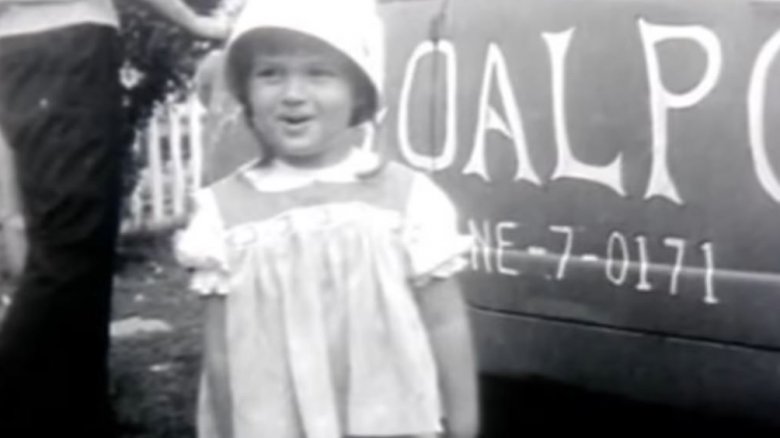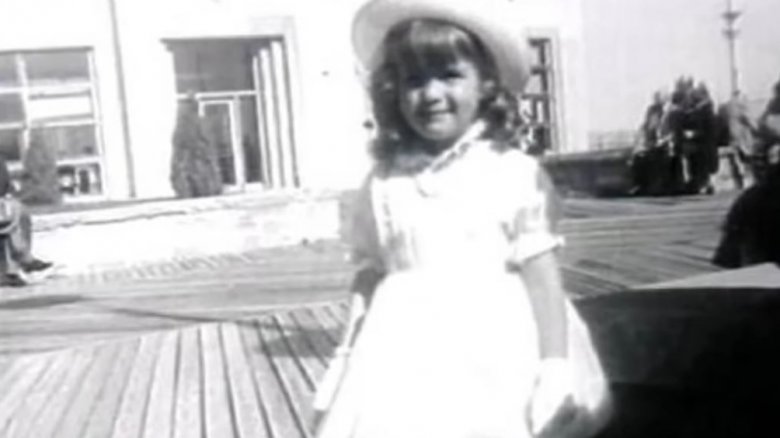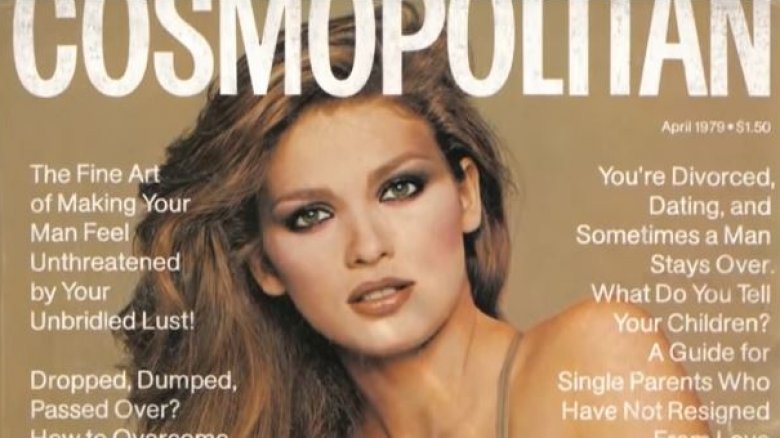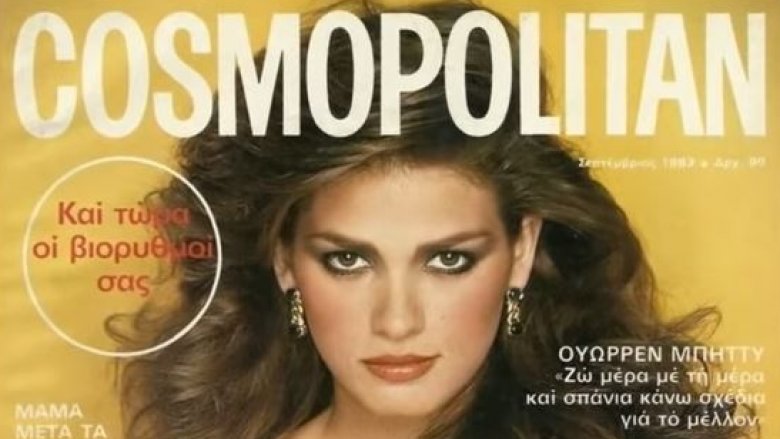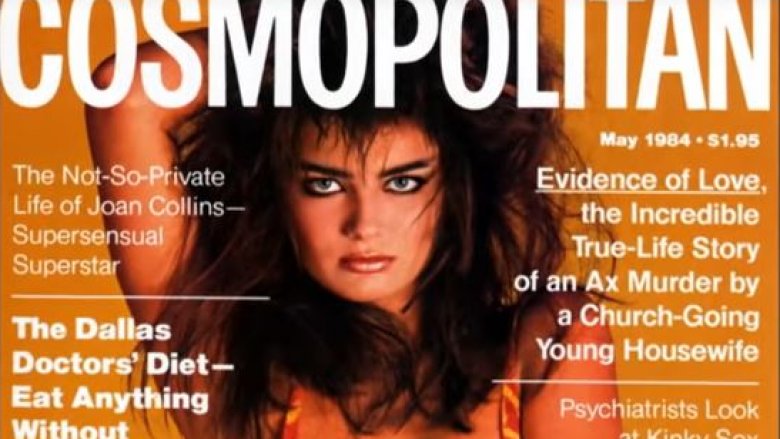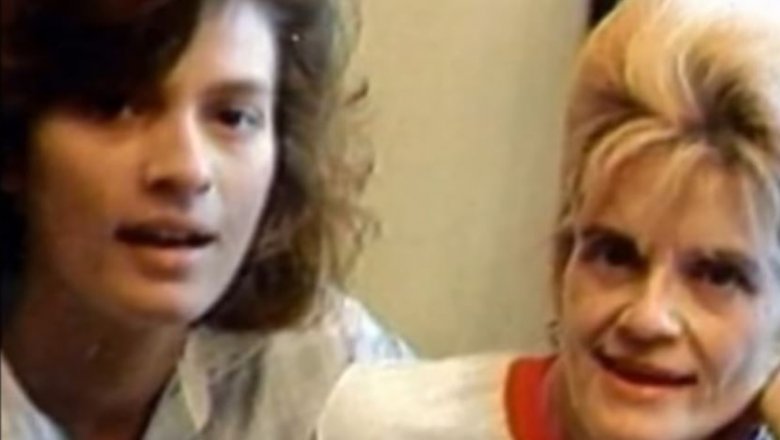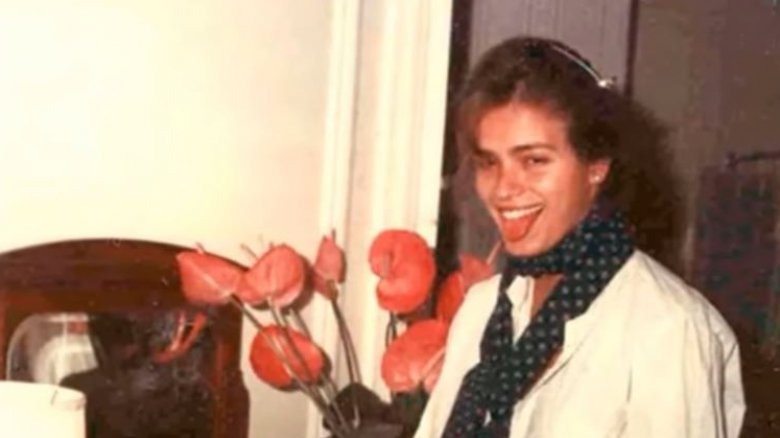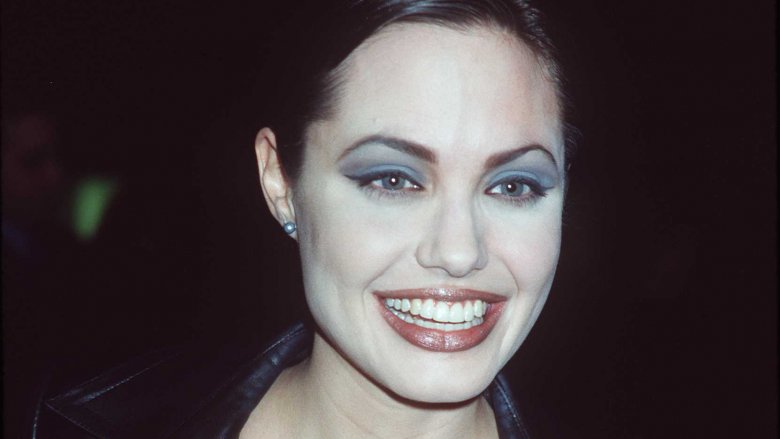The Tragic, Real-Life Story Of The World's First Supermodel
When Gia Carangi's life is remembered at all, it is remembered as a tragedy. Though she is acknowledged as the world's first true supermodel, her short life and her tragic demise mean that her name isn't as widely known as you'd expect from someone who had achieved such a feat. Born in 1960, Carangi's face was all over magazines by the time she was in her late teens. Less than a decade later, she was dead.
Carangi is credited with originating the "heroin chic" look that ruled the fashion world in the 90s. Her story, when told today, is often shared as a cautionary tale of the dangers of drugs, but there is so much more to Carangi than her wild girl ways. Carangi was not just devastatingly beautiful, but also had a beautiful, sensitive soul. Her life was even more tragic than many people know, marked by heartbreak and an unhappy childhood.
Her career started when she was quite young
Carangi was just a teenager when she started modeling for Gimbels department store. "We had always used regular models and then somebody decided we should try $10-an-hour models and just have a cattle call," photographer Michael Ahearn told Philadelphia. "Most of the people were just so awful and then along comes this little girl — she must've been 14 — and she was wonderful. She was always late, always had some excuse. But I used her as much as I could."
In a time when blue-eyed blondes ruled the industry, Carangi's darker features made her stand out. By the time she was 18, she had landed an ad for Versace and was pulling in $100,000 per year (valued at more than $350,000 in 2019 taking inflation into account). It seemed that her future was made. Little did people know that Carangi's seemingly good fortune would instead mark the beginning of a nightmare that would end in tragedy.
She had a troubled relationship with her family
For a while, it seemed like Carangi was living in a fairy tale. Not only was she poised to become a successful model, but her career also helped her to escape an unhappy childhood. Carangi's father was volatile and abusive towards her mother, who eventually left the family when Carangi was 11. The only girl in the family, Carangi would spend much of her adolescence seeking her father's approval.
"My Dad was always working, and when he was around he paid more attention to my brothers," she wrote in her journal (via a biography, Thing of Beauty). "I would try to get his attention and he would reject me by putting me down, making fun of me, teasing me. He would do this in front of my brothers. I felt like they were better than me and the only difference was they were boys. I feel my father never gave me what I needed growing up which was love, understanding, time... he never gave me the time of day."
Her mother was uncomfortable with her attraction to women
Carangi's relationship with her mother was also tense. In adolescence, Carangi found herself attracted to another girl. When her mother found out, she sent her teenage daughter to a therapist in hopes that she would overcome her attraction to women. Carangi's mother was convinced that her daughter's sexuality was just a phase. "It's very difficult for me to relate to all that because I don't have feelings or inclinations that way," Carangi's mother said in Thing of Beauty. "I can really say that I can accept a person no matter what their sexual preferences are, but I simply can't identify with that."
In order to please her mother, Carangi went to see the therapist. Fortunately, rather than trying to "cure" Carangi, as might have happened years prior when same-sex attraction was classified as a mental illness, Carangi's therapist instead told her that there was nothing wrong with her feelings and helped her become more confident with her sexuality.
David Bowie influenced her in more ways than one
Carangi was greatly influenced by music and fashion icon David Bowie. She and many of her friends emulated his androgynous style. It was a style that would continue to define Carangi's personal look for the rest of her life. However, it was more than just Bowie's style that enraptured Carangi. She was also drawn to him as a symbol of rebellion and countercultural values. Bowie, who was himself bisexual, was an LGBTQ role model in a time where many LGBTQ celebrities kept their sexuality a secret.
Carangi's devotion to Bowie didn't impress her family. Her stepfather, Henry Sperr, said in Thing of Beauty that Bowie had seemed to change Carangi. "She got a Bowie haircut and that changed her personality completely," he said. "She seemed like a sweet, young little kid before, and then afterward... well, you know, it probably had something to do with the drugs. She would be disrespectful, she would be constantly fighting, just over nothing. And she'd be very rebellious."
A history of sexual assault left her traumatized
Some of those who knew Carangi remember her as angry. If she was angry, she had good reason to be. Throughout her life, Carangi suffered through a number of sexual assaults, the trauma of which never truly left her. A friend of hers, Rob Fay, revealed some of the horrors of Carangi's life in Thing of Beauty.
"She had a rough time with a lot of men in her life," said Fay. "There were times in New York when people just took advantage of her. I guess you wouldn't really call it rape because she wasn't screaming, but there were a lot of times when that happened when she didn't want it to happen. But being as high as she was, you can't argue, you don't even know what planet you're on. Something like that happens, it's just 'Oh, well, it's part of the scene.'"
Not all of the assaults Carangi suffered were dismissed as "part of the scene," though. Fay added, "She had been raped a few times. Date rape, or whatever you want to call it. She had a lot of anger about that."
She viewed herself as boring
In spite of the fame and the money (or perhaps, in part, because of it) Carangi never managed to fully escape the deep unhappiness that was a constant presence in her life. The world viewed her as a once-in-a-generation beauty and also as a style icon, but Carangi was less convinced of her appeal. Even as a young girl, however, her friends saw her as a magnetic presence.
"That was the thing you have to remember about Gia," a friend of hers told Philadelphia. "She had grown into a very exotic-looking, very special girl. She could just sit in a chair and smile and she was automatically the center of attention. She had charisma. She wasn't extremely smart — in fact she always believed herself to be extremely dull. She always used to say, 'People look at me and they think I'm this beautiful thing and I must be extremely hot... and what they don't know is that I'm extremely boring.'"
Modeling was far from a dream career
According to Carangi's friend, Sharon Beverly, Carangi didn't enjoy modeling at all. "Gia hated the business from the beginning," she told Philadelphia. "She felt like a piece of meat. I know it's an old cliché, but that's what she always said. She just wasn't cut out for the business, she was too sensitive for it."
Other friends speculated that Carangi became a model to please her mother. "She knew her mother wanted her to be a model," said a friend. "And she knew it was her destiny." The friend added that they believed Carangi had been happier living at home and working in her father's hoagie shop. Carangi, however, had other aspirations outside of modeling and the family business. She was interested in photography, and took some classes at NYU until her busy schedule forced her to drop out. She also had plans to "make a big splash in film" as a cinematographer.
She hoped to one day get married and have children
Another of Carangi's dreams was to get married and start a family of her own. Her friends, as well as her journal entries, reveal that Carangi was a deeply passionate woman, quick to fall in love. "Gia just loved women and she fell for them whether they were straight or gay," a high school friend told Philadelphia.
While Gia was quick to fall in love, she also desperately wanted to be loved herself. "Gia was prone to needing someone around all the time," a former partner said. "Sometimes it was almost like she needed a baby sitter."
A woman who did not return the affection Carangi had for her said that the model was searching so hard for love that she would sometimes fall for anyone who was kind to her, whether they were attracted to women or not. "I think she mistook caring as sexual," she said. "She needed people so badly that she pushed them away by putting expectations on them they couldn't possibly fulfill."
"When you're young... it's hard to differentiate between what is real and what is not real"
Would Carangi's life have turned out happier if her circumstances had been a little bit different? It's hard to say. Her youth at the launch of her career no doubt contributed to her later problems. The industry can be difficult on models, particularly when they are as young and impressionable as Carangi was when she was just starting out. In 1982, Carangi was profiled as part of a 20/20 report on the modeling world which highlighted Carangi as an example of the "dark side" of the industry.
"When you're young... you know, it's hard to make the difference between what is real and what is not real," Carangi said. "There's a lot of vultures around you." Carangi also talked about how she got hooked on drugs, saying that it "creeps up on you." She added, "It catches you in a world that's, you know... none that anyone will ever know except someone who's been there."
Losing her mentor caused her to grow more dependent on drugs
Carangi had already been using drugs when her mentor, Wilhelmina Cooper, died in 1980, but the loss of Cooper caused her addiction to spiral out of control. Cooper had signed Carangi to her modeling agency in 1978 and also took the young model under her wing.
"I don't know what is happening in my life, nothing seems or feels right to me," Carangi wrote in her journal (via A Sketch of the Past). "I want to live so bad. But I'm so terribly sad. I wish Wilhelmina didn't die. She was so wonderful to talk to about work. I cry every day for a little while. I wish I knew what to do... I pray that things fall into place." Carangi's biographer, Stephen Fried, told the Chicago Tribune that Cooper's death put Carangi "over the edge," calling Cooper her "surrogate mother."
Other models were nasty to her, contributing to her depression
The industry wasn't kind to Carangi. Instead of finding camaraderie with her fellow models, she instead felt shunned by many of them. Their treatment of her contributed to her loneliness and left her depressed. "The other models seem to resent me," she wrote after a photo shoot in her datebook (via Philadelphia). "Is it jealousy or [are] all girls just like that... I get the feeling a few of them would like to pull my hair out. Why don't I get those feelings toward other girls... sometimes they say things that are quite nasty and rude. I think it is a terrible part of the human race, a real flaw. I thought we were all suppose to love one another... "
Another of Carangi's datebook entries elaborated more on her feelings of isolation. She wrote, "... here I sit... feeling very set apart from the other humans but I am finally really starting to dig being different. Maybe I am discovering who I am. Or maybe I'm just stoned again."
She was eventually blacklisted, bringing an end to her modeling career
Perhaps even more tragic than the fact that Carangi died so young was that she died in relative obscurity. At the end of Carangi's life, she was virtually on her own, unable to get clean. While she was an A-list celebrity just a few years earlier, Carangi's continued drug use eventually brought in end to her career. Not only was she volatile and difficult to work with, but her frequent drug use had also scarred her skin leaving her arms covered in needle marks. Towards the end of her life, when she was sober enough to work, she worked in a shopping mall selling jeans and as a checkout clerk at a nursing home cafeteria.
"She reached her peak in 1980 but continued to work on and off through 1984, when she was finally blackballed," her biographer, Stephen Fried, told the Chicago Tribune. "She'd make money and then disappear into drug use. She tried rehab programs, but they didn't work. Her family tried to help her, but they couldn't. By 1985 she was broke, was still using drugs and had AIDS. She died, homeless, in November 1986."
Her death helped changed the public's view of AIDS
At the time of Carangi's death, the public still understood very little of AIDS. It was viewed primarily as a "gay" disease, spread by sexual contact. The year before Carangi's death, the New York Daily News (via Vice) revealed that nearly half the respondents in a poll they conducted believed that those suffering from AIDS should be quarantined. Celebrities such as Carangi and actor Rock Hudson, who revealed he had AIDS in 1985, just a few months before it killed him, helped to change the face of the illness.
At the time of Carangi's death, things were starting to change, and her death helped raise awareness about how AIDS is spread. The model contracted the illness through drug use, debunking the myth that AIDS was restricted to gay men. By the late 1980s, the world had become more sympathetic to sufferers of AIDS, spurring fundraising efforts and government funding.
Cindy Crawford's career took off because people saw her as a "replacement" for Carangi
Even after Carangi's drug use made working with her next to impossible, the industry still wanted her face on magazines. Though Carangi herself was no longer popular, her look was still very much in demand. This helped give rise to the career of another famous supermodel, Cindy Crawford, whose career was taking off in the mid 1980s. Crawford looked enough like Carangi that the industry began to see her as a substitute for the first supermodel, calling her "baby Gia." Crawford landed on the cover of Vogue in 1986, the same year Carangi died.
"Everyone had loved Gia," she told Vanity Fair. "So that's how I got in. In one day, I saw Avedon, Scavullo, Patrick Demarchelier, Rico Puhlmann — all the big photographers at the time. The Vogue cover was like the stamp of approval. And from that came Revlon and all the other great things."
Angelina Jolie almost turned down playing her because she didn't want to "be that open"
Although Angelina Jolie famously played Carangi in the 1998 HBO adaptation of her story in the film Gia, the actress was reluctant to take on the role. When first offered the role, she turned it down because she didn't want to portray such a troubled person, believing that the role would "really mess with me and drive me a bit nuts to be that open.” Jolie told The New York Times that she initially "hated" Carangi when researching her life.
After getting to know more about Carangi and her life, however, Jolie started to change her mind. While filming, she began to identify more with the supermodel, and gained a deeper appreciation for her talent and what she had gone through in her life. "Oh, God," she said about her changing views on Carangi. ”I'd like to date Gia. I'd want to be her lover.”
